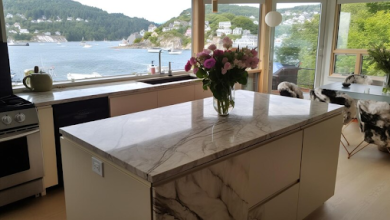The prospect of building a custom home is an exciting one. It allows you to design a space that perfectly reflects your needs, lifestyle, and taste. However, navigating the custom home building process can seem daunting, especially for first-time builders.
Let’s get started!
Top Tips for Ensuring a Smooth Custom Home Building Journey
Here are four key tips to ensure your custom home building journey is smooth, successful, and stress-free:
1. Solidifying Your Vision and Setting a Realistic Budget:
Before embarking on the design and construction phases, take time to solidify your vision for your dream home. Consider the number of bedrooms and bathrooms you need, desired living spaces like a home office or dedicated media room, and any unique features you’d like to incorporate.
Research different architectural styles and browse design inspiration online or in magazines. Creating a mood board can also be a helpful tool to visually represent your preferences. While it’s important to dream big, setting a realistic budget from the outset is crucial.
Factor in not just the construction costs but also the cost of the land (if not already acquired), architectural fees, builder fees, permits, and potential contingencies.
2. Partnering with a Qualified Architect and Builder:
A successful custom home building project relies heavily on partnering with the right professionals. An experienced architect can translate your vision and budget constraints into a functional and aesthetically pleasing design plan. Look for an architect who specializes in custom home design and understands your preferred style.
They will develop detailed blueprints and specifications for your new home, ensuring compliance with building codes and regulations. Once you have a finalized design, selecting a reputable builder is essential. Choose a licensed and insured builder with a proven track record of quality craftsmanship and customer satisfaction. Ask for references, visit past projects, and ensure the builder is comfortable working with your chosen architect and design plan.
3. Scheduling Regular Inspections and Maintaining Communication:
Throughout the custom home building process, scheduling regular inspections is crucial. These inspections, typically conducted by a qualified inspector hired by you or your local municipality, ensure that the construction adheres to building codes and safety standards.
Inspections are typically conducted at various stages of construction, from the foundation to framing, electrical, plumbing, and final completion. Maintaining open communication with both your architect and builder is also essential. Schedule regular meetings to discuss progress, address any concerns, and ensure the project stays on track and within budget.
4. Understanding the Value of a Pre-Drywall Home Inspection:
One crucial inspection often overlooked by first-time builders is the home inspection conducted before drywall is installed. This home inspection provides a valuable opportunity to identify any potential issues behind the walls, such as framing errors, faulty electrical wiring, or improper plumbing installations.
Addressing these issues before drywall goes up saves time, money, and future headaches down the line. Since these issues might be hidden once drywall is installed, a pre-drywall inspection allows for easier access and correction.




